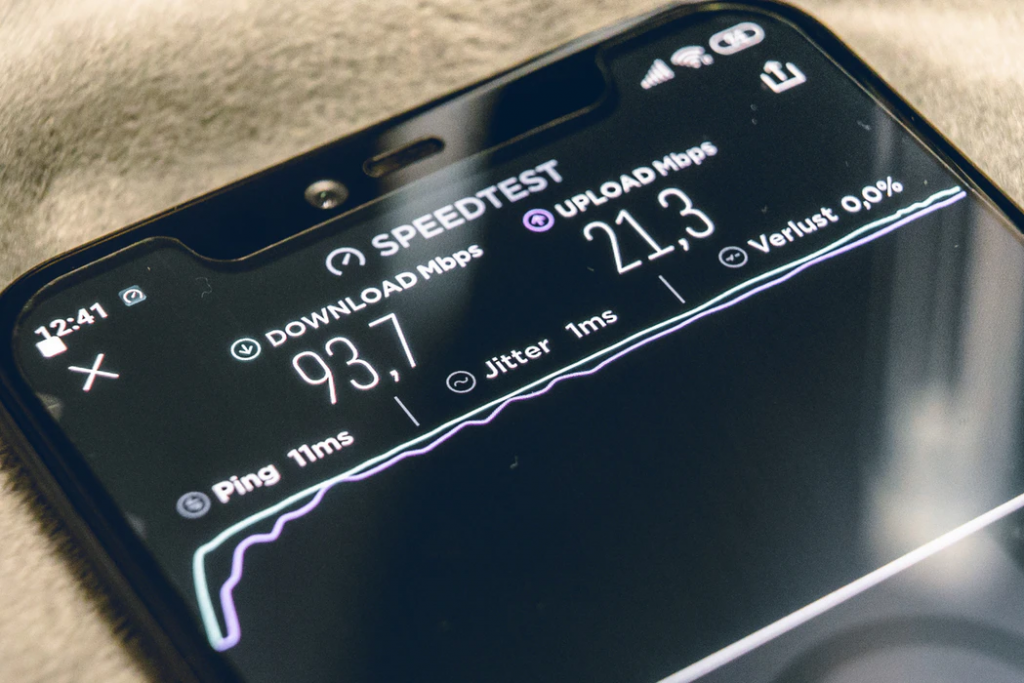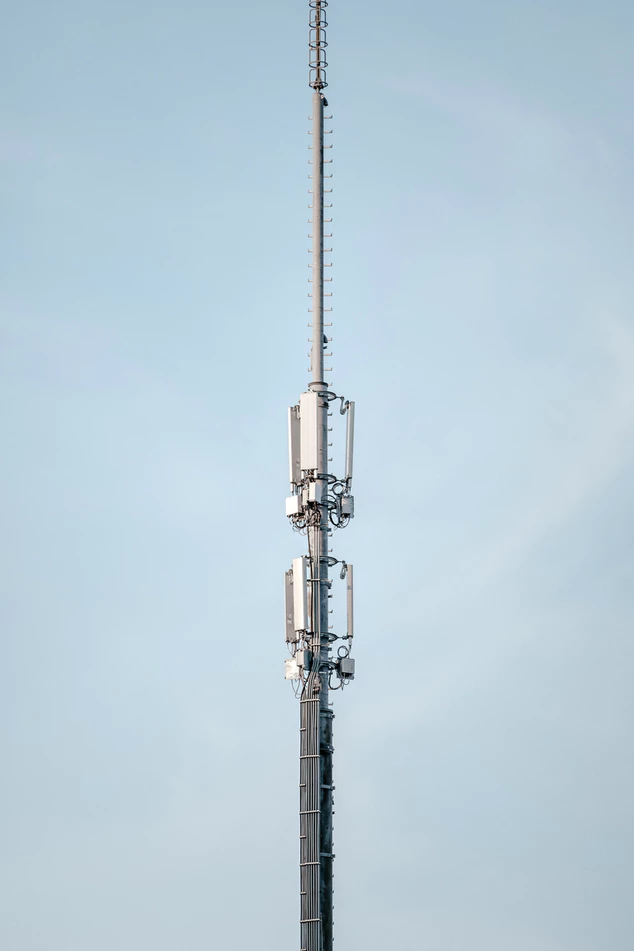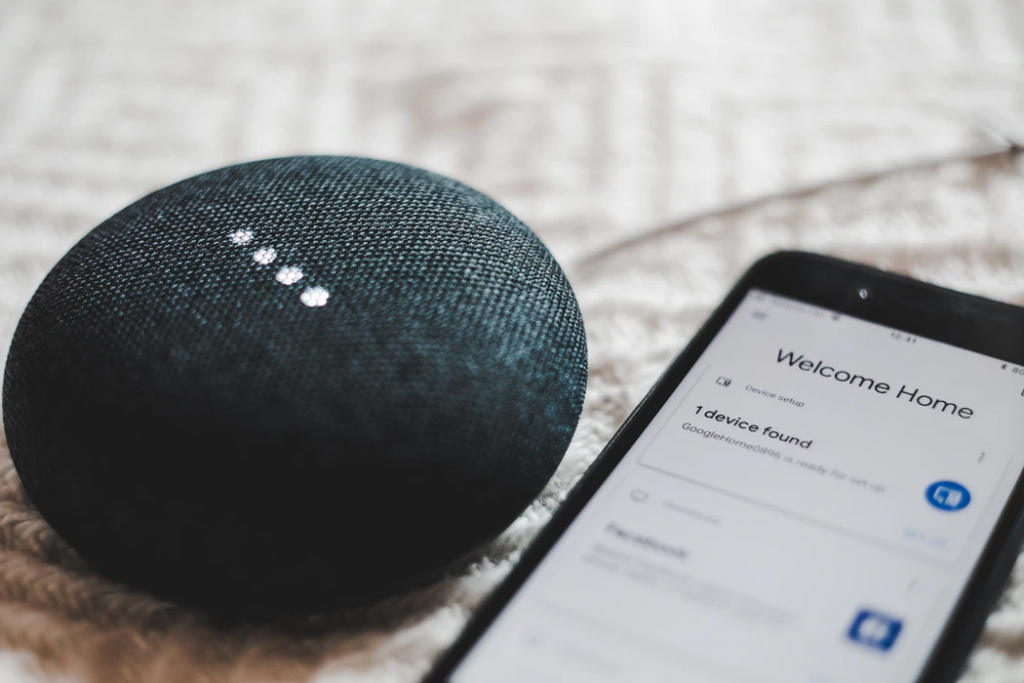Wireless technology has come a long way since the early days of the flip-phone. Today, phones and other wireless devices can do so much more than make phone calls and send text messages; they are entire computers that communicate with one another.

With the power of internet connectivity introduced in cell phones in the early 2000s, technology providers have been racing to improve wireless connectivity for all in the hopes of creating an even more globally connected world. Today, 4G technology is commonplace in mobile phones and other devices. Yet, there is another evolution of wireless networks that has generated a great deal of buzz, even if it likely won’t make a huge difference in your life.
What is 5G? How does it work?
Mobile internet connectivity first began with 3G technology before evolving into 4G over time. Now, 5G networks promise a more reliable wireless connection, leading to faster internet browsing speeds on smartphones and other wireless devices.
It is expected that 5G will provide users download speeds of around one gigabyte-per-second (GBps). It also promises to decrease the time it takes for devices to communicate with one another, also known as latency time.
5G can perform at a more optimal speed because it operates on three separate spectrum bands: low-band spectrum, mid-band spectrum, and high-band spectrum. It is a high-band spectrum where extremely high speeds and low latency can be found. However, until now, there has been little coverage across the globe for high-band spectrum networks, thus requiring wireless providers to build the infrastructure necessary to support a mass amount of users on this spectrum.
The 5G takeover is coming soon, as most wireless carriers have started rolling out the technology to select cities since 2018. It is estimated that by 2023 there will be 1 billion 5G users around the globe.
Millimeter-wave technology & beamforming
When it comes to mobile devices, speed is king. 5G technology is set to up the game by utilizing millimeter wave components (mmWave) which allow for high-speed communication between mobile devices using high frequencies. Up until now, mmWave technology has not been used directly in mobile devices as it was only a viable option for line-of-sight communication where both parties were in sight of each other.

The reason cell phone companies haven’t included mmWave technology yet into devices is because even though using high frequencies significantly improves communication speeds, it is also prone to more interference. This means anything from rain and falling leaves to solid walls can reduce the quality of a high-frequency signal. However, scientists are working to create mmWave antennas that come with the benefits of high-frequency signals, but without the interference, they have been known to bring. mmWave is almost here, and chip-maker Qualcomm has already jumped the gun by being one of the first to unveil a 5G mmWave antenna that will be used in the next generation of cell phones and wireless devices.
There is an additional advancement that will make 5G devices even better for their users. Beamforming, which allows a wi-fi signal to be more focused, will help increase the strength of wireless device signals. In the beamforming process, multiple signals are transmitted at an identical wavelength from a single device. These signals combine to produce a stronger unified signal. This differs greatly from current 4G solutions which disperse wireless signals in all directions, thus weakening their signal.
The implications of both these advancements could mean more wireless service across the globe with lower prices. FCC Commissioner Brendan Carr is totally onboard with the use of beamforming. Carr even went as far as to give a scenario in which this technology would be of great use.
“One of the first places you’re likely to see this is in apartment complexes,” says Carr. “You may have a building that has an agreement such that there’s only one wired fiber provider available. Now, thanks to 5G antennas on the outside of the building, you can beam everyone living in that apartment another option for extremely fast fiber-like broadband.”
As Carr mentions, the biggest benefit to 5G networks is the ability to create significantly greater wireless speeds than ever before.
Benefits of 5G tech
5G is set to be a big player in the development of autonomous vehicles. This faster network will help vehicles communicate with one another on the road, making driverless cars more of a reality than ever before. In fact, many believe that until 5G becomes the norm, autonomous vehicles will not be able to operate because there won’t be strong enough wireless signals to connect cars with one another and their greater environment.

Dr. Joy Laskar, co-founder and CTO of Maja Systems, mentioned how greater connectivity is needed for driverless cars to become a reality. “With an advanced Wi-Fi connection, it will take 230 days to transfer a weeks-worth of data from a self-driving car and that is why we need much faster ASIC processing technology and products,” says Laskar.
This benefit extends to all areas of the internet-of-things (IoT), including the tracking of public utilities, smart devices, and tracking products throughout the supply chain. Because 5G allows more devices to be connected to the internet, more and more devices will be connected to one another, making for an increasingly connected world.
A day in the life of 5G could look something like this:
- Your morning alarm alerts your coffee maker to begin brewing a fresh cup of coffee immediately upon you waking.
- Your driverless car navigates to work on its own.
- You make a 3D holographic phone call with your sister on the way to work.
- At work, your printer automatically purchases new ink from your Amazon account when it is running low.
These are just some of the ways that 5G connectivity will make your life easier and more efficient on a daily basis.
5G health risks? Or a conspiracy theory?
When cell phones were first introduced, conspiracy theorists believed that the new devices would quickly lead to cancer. While these claims were easily dismissed, the advancements in 5G do have their own set of health concerns.

It appears those 5G high-frequency waves that are so revolutionary also could come with health concerns in the form of radiation. The frequencies reportedly used by 5G fall within the microwave band spectrum that many other waves also fall within. Experts have admitted that this will cause humans to have an increase in exposure to radio waves, but it is an argument as to whether the increase will be significant enough to harm those using the technology.
On one side, the concerns are so real that a group of scientists and doctors recently wrote a letter to the European Union asking the governing body to refrain from rolling-out 5G technology until more data can be analyzed. On the other, many experts believe these concerns are severely overblown because the human skin blocks internal organs from radio waves to a degree which an increase in exposure will not play any meaningful effect.
5G vs. 4G
With all of this said, will 5G really make so much of a difference when compared to your current 4G smartphone? Probably not. In fact, the rollout of 5G may even benefit 4G users because it is building on top of existing 4G networks. It is expected that as more people move to 5G, fewer users on 4G will allow for increased capacity and speeds.
The truth is, 5G doesn’t create anything new but rather improves upon the existing groundwork laid by 4G technology. For instance, you will be able to connect more of your devices to the internet at faster speeds. However, this doesn’t make 5G the revolutionary new idea many people are touting, it makes it a better version of an already existing technology.
A nice innovation, but nothing revolutionary
As 5G technology grows, it will become quite obvious that this improvement in wireless speeds and connectivity is beneficial, but nothing life-changing. Yes, 5G networks are paving the road for new and cool innovations, like 3D holographic calling, but for the most part aren’t creating much more additional value than current wireless networks.
Even though wireless carriers are beginning to tout 5G as the latest technology, we are still several years away from any meaningful rollout of 5G networks across the globe, and it will be a long time before 5G will greatly impact the internet-of-things as promised. And with how fast technology moves, maybe by then we will already be hearing about the next iteration of wireless connectivity that will change our lives.